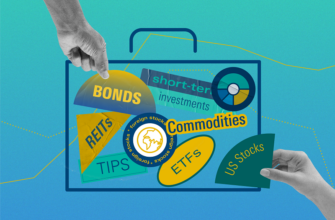Risk and Reward: Understanding the Relationship in Investments
Investing in financial markets offers potential opportunities for wealth accumulation and growth. However, it is essential to recognize that every investment carries a certain degree of risk. The relationship between risk and reward is a crucial concept to grasp for successful investing. In this article, we will explore the significance of investment risk assessment, the art of balancing risk and return, and how risk tolerance influences investment decisions.

Investment risk assessment: Analyzing potential risks
Investment risk assessment involves evaluating the potential risks associated with a particular investment. It is essential to conduct thorough research and analysis to understand the nature of the risks involved. Some key factors to consider during risk assessment include:
- Market volatility: Financial markets can be subject to significant fluctuations, influenced by economic conditions, geopolitical events, and investor sentiment. Understanding the historical volatility and potential future trends of the market is crucial in assessing investment risks.
- Company-specific risks: Individual companies may face risks unique to their operations, such as changes in management, technological disruptions, or legal issues. Evaluating the financial health, competitive position, and industry dynamics of a company is vital in assessing the risks associated with investing in its stocks or bonds.
- Asset class risks: Different asset classes, such as stocks, bonds, real estate, or commodities, carry varying degrees of risk. Assessing the risks associated with each asset class and diversifying investments across different asset classes can help mitigate overall portfolio risk.
Balancing risk and return: The pursuit of optimal investment performance
Investors often seek to achieve a balance between risk and return. While higher-risk investments have the potential for greater returns, they also come with an increased probability of loss. Conversely, lower-risk investments typically offer more modest returns but with a higher level of capital preservation. Achieving an optimal balance requires careful consideration of several factors:
- Investment objectives: Investors have different goals, such as capital preservation, income generation, or capital appreciation. Determining the primary objective allows investors to align their risk tolerance with their investment strategy.
- Time horizon: The length of time an investor intends to hold an investment is a critical factor in determining the acceptable level of risk. Longer time horizons generally allow for a higher tolerance for risk, as short-term fluctuations may even out over time.
- Diversification: Spreading investments across different assets, sectors, and geographic regions can help reduce portfolio risk. Diversification allows investors to mitigate the impact of adverse events affecting a particular investment or asset class.
Risk tolerance and investment decisions: Understanding personal risk appetite
Investors have varying degrees of risk tolerance, which refers to their willingness and ability to withstand investment losses. Factors influencing risk tolerance include financial situation, investment experience, investment knowledge, and psychological factors. Understanding one’s risk tolerance is crucial in making sound investment decisions:
- Risk capacity: Assessing one’s financial capacity to bear investment losses is a fundamental aspect of risk tolerance. Consideration should be given to factors such as income stability, savings, and other financial obligations.
- Emotional factors: Emotional biases, such as fear or greed, can significantly impact investment decisions. Investors must recognize their emotional responses to market volatility and make decisions based on rational analysis rather than short-term emotions.
- Review and reassessment: Risk tolerance is not static and can change over time due to personal circumstances or evolving market conditions. Regularly reviewing and reassessing risk tolerance allows investors to align their investment strategies accordingly.
Conclusion
Investment risk assessment, balancing risk and return, and understanding risk tolerance are essential components of successful investing. By carefully evaluating potential risks, striking a balance between risk and return, and aligning investment decisions with personal risk tolerance, investors can navigate the complex world of investments with greater confidence. Remember, a well-informed and disciplined approach to risk can lead to rewarding investment outcomes.









